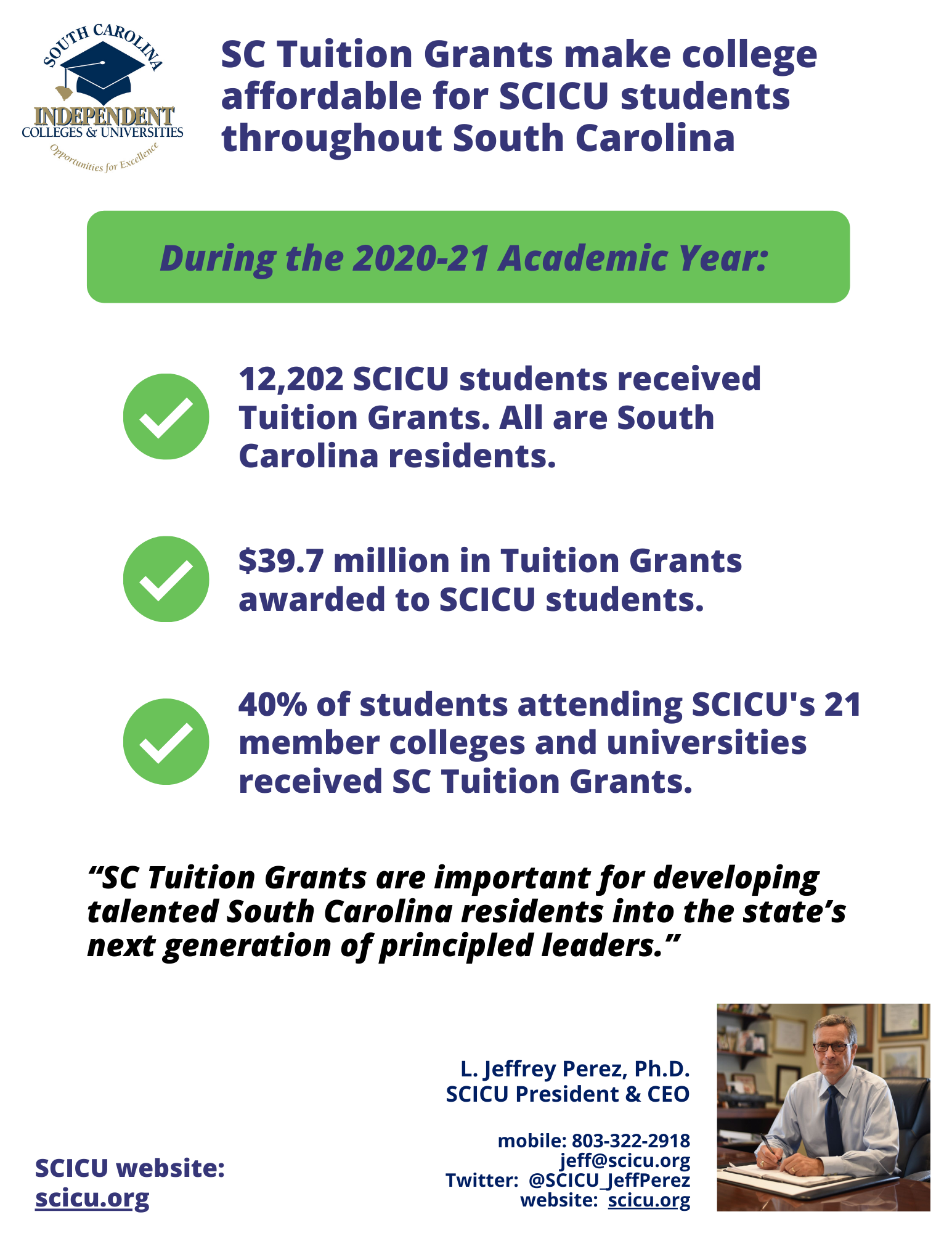2022 SCICU Infographics series – SCICU salutes its five member HBCUs
This infographic, third in the 2022 SCICU Infographics series, was sent to all members of the South Carolina General Assembly on February 16, 2022.

This infographic, third in the 2022 SCICU Infographics series, was sent to all members of the South Carolina General Assembly on February 16, 2022.

This infographic, second in the 2022 SCICU Infographics series, was sent to all members of the South Carolina General Assembly on January 19, 2022.

This infographic, first in the 2022 SCICU Infographics series, was sent to all members of the South Carolina General Assembly on January 12, 2022.
The big news — $2.2 trillion big -– is the “Coronavirus Aid, Relief, and Economic Security Act.” President Trump signed the emergency spending bill into law March 27th. Thanks to a national advocacy effort of institutions and associations, independent higher education was included in the stimulus package, which provides $14 billion for higher education, to …
FUTURE Act pressure – Sen. Lamar Alexander (R-TN), chair of the Senate Committee on Health, Education, Labor and Pensions, continues to feel pressure to move the FUTURE Act, which secures $255 million in annual funding for HBCUs and minority-serving institutions (MSIs). This funding expired on September 30th. Though having sailed through the House, Sen. Alexander …
Reimbursement for Perkins Loan Cancellations We all recognize as laudable federal law that provides Perkins Loan forgiveness for qualified borrowers who serve in public service fields such as teaching, nursing, and the military, but Congress has not funded the loan forgiveness program since 2010. Colleges and universities have been on the hook for these loan …
President signs two-year budget deal – President Trump signed a sweeping two-year budget agreement on Aug. 2 that lifts the federal borrowing limit and increases spending. The threat of default was removed for the 2020 elections, and the new law suspends the debt ceiling through July 2021. Budget deal some good news for higher ed …
Those of us associated with independent higher education in South Carolina should be very pleased with the results of the 2019 session of the SC General Assembly. The final version of the budget delivered to the governor includes the full $1.6 million increase requested by the Tuition Grants Commission – the full request has not …
On the federal front, as so often happens, there’s good news and bad news. The good news is support in the House of Representative for student financial aid… The bad news is the House passed the so-named “Equality Act,” which, while it may have laudable intent, would have very negative consequences for numerous SCICU institutions. …
